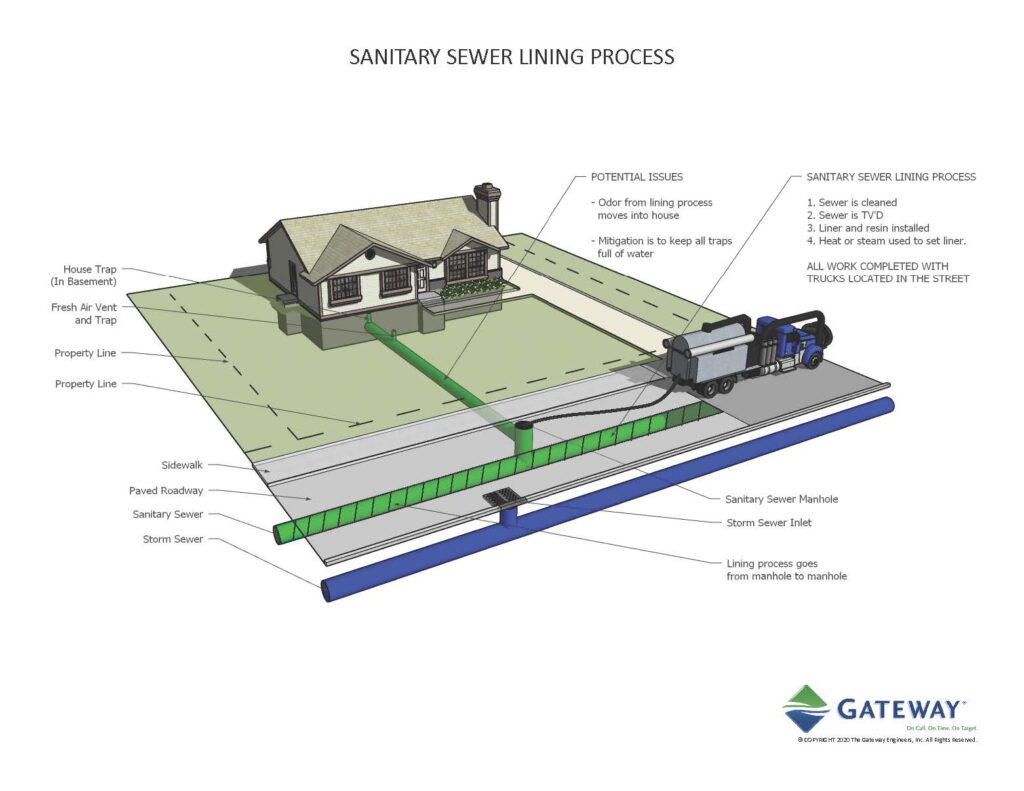Check out what’s
Trending

Final Friday summer concerts
The Inspection Office oversees enforcement of the ordinance adopted by the municipality to prevent overloading of sanitary sewers. The connection of storm water to a sanitary sewer is not permitted. Regulations controlling this matter are issued by The Department of Environmental Protection, The Allegheny County Health Department (County Plumbing Code) and Mt. Lebanon, as part of the Mt. Lebanon Code Ordinances.
Maintain the quality of life and prevent the loss of public and private property.
The Mt. Lebanon Department of Public Works provides and oversees the delivery of proactive preventative maintenance services to protect public health and safeguard public and private property along 160 miles of sanitary sewer pipes.
Where does the wastewater in your home go? Click for an interactive map and other background.
Before you call a plumber, call 911 and have public works inspect it to see if the clog is in the municipal line before you go to the expense of hiring a plumber. Private plumbers cannot work on municipal sewer lines, only lines that are on your property, so it’s worth it to see where the clog is first.
If your neighborhood is scheduled for root treatment, you will receive a flyer.
All products used to treat the sewers are approved by the Environmental Protection Agency and the Pennsylvania Department of Agriculture.
A certified pesticide applicator from Duke’s Root Control and a Mt. Lebanon Public Works inspector are on the site at all times. The foam or herbicide used never comes in contact with anything other than the inside of the sanitary sewer system.
Duke’s Root Control Inc. will be performing sanitary sewer root control work on the municipal sewers as indicated on the map.
Work will begin on February 17th and scheduled for completion by February 28th, 2025. All work will be performed from 7:00 AM-4:30 PM daily. You will be notified by door hanger if this applies to your property. If have a manhole on your property, please keep the area clear and your pets contained. The total time spent at each location should not exceed 30 minutes.
For additional information or questions regarding the Mt. Lebanon herbicide root treatment program, call Bob Hunn, Jr. at (800) 447-6687.
In order to control overloading the sanitary sewer, the Pennsylvania Department of Environmental Protection requires each local government to adopt a corrective action plan. One of the requirements of the plan is to reduce overloads to the sanitary sewer by removing rain, or storm water, from the lines. The purpose of dye testing is that property owners can correct the situation and bring their property into compliance. The Public Works Department will provide counseling to the property owner in the most efficient way to correct the problem.
Each year, Mt. Lebanon has a percentage of its sewers inspected. From time to time, those inspections reveal some lines that need to be repaired. One of the repair options uses a procedure called lining, to avoid having to dig a trench at the site of the line. It involves cleaning the line, temporarily re-routing the drainage and inserting a liquid resin which is then heated to create a new smooth inner surface. The line is then inspected again and the flow is restored. It is generally quicker and cheaper than digging and replacing the sewer line. The procedure is usually used on sanitary sewers (sewers that carry household waste water) but can be used on storm sewers (sewers that carry rain runoff.) Lining our aging sewer system significantly reduces the number of blockages and backups.
If the sewers near your home need to be lined, you will be notified by flyer.
See a map of current sanitary and storm sewer lining work.
Keep reading for more details.

The municipality performs Cured in Place (CIPP) lining of storm and sanitary sewers each year. The municipality has been rehabilitating sewers with this trenchless technology for more than 20 years and it is used all over the world. CIPP lining creates a new structurally sound pipe within the existing pipe and extends the life of the sewers approximately 50 years while minimizing disruptions to the municipality’s residents by eliminating the need for excavations.
We prepare specifications year that require contractors to follow safety protocol and federal Occupational Safety and Health Administration (OSHA) standards to protect their employees and the public.
The practices used in Mt. Lebanon are in accordance with industry standards and best practices for this type of work.
Pre-CCTV and cleaning are required prior to lining to inspect and prepare the pipe for lining. The contractor is on site for this and must access manholes to be able to perform the work.
The contractor returns later to execute lining work once they confirm the condition of the pipe and prepare materials. The contractor is required to notify all residents within 250 feet of the work at least 72 hours prior to beginning their work.
During lining operations, water service is not interrupted. However, during liner installation, the sewer service lateral connection to affected properties is closed off at the main sewer line. After completion of the liner installation, all active lateral connections are reinstated.
In order to avoid a backup during the lining installation, residents must only use water for emergencies. All sump pumps must be turned off as well.
We require a certified National Association of Sewer Service Companies (NASSCO) contractor to televise the sewer after liner installation to confirm successful completion of the lining work. This is typically completed during the lining process, but it may happen the next day due to schedule constraints.
While performing the lining, the contractor uses steam to trigger the reaction for the lining resin to cure. The steam passes through the pipe and is discharged into the atmosphere. NASSCO studies on this process have established safe practice techniques contractors are to follow.
Occasionally, residents may experience a resin-like odor in the home. The odor originates from a material called styrene, which has a very low odor threshold, meaning you can smell very low concentrations of the material. The styrene is part of the resin that cures the liners and can also be found in building materials, automobile exhaust and photocopy machines.
If residents experience odor inside the home, this indicates the home has deficient fixture traps and/or house traps. Filling basement traps with water may help to prevent this odor from entering the home. Should resin odor enter the home, the house should be ventilated by opening windows and running fans. Residents smelling the odor should consult a registered plumber to inspect and repair deficient home plumbing, to bring so all house traps and plumbing fixture traps into compliance with the International Building Code.
Check out what’s

Final Friday summer concerts



